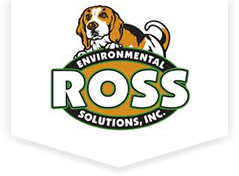Types of Mold Found in Atlantic City, NJ; Stachybotrys Chartarum (Black Mold), Penicillium & More
Mold is fairly common to find in households. Darkness, humidity, and dust to feed on is all it takes for mold spores to develop and thrive. Because they like the dark, most people do not realize they even have a mold problem. There are tens of thousands of different types of mold and where some do not affect people in any way, others can lead to serious and chronic health conditions. Bathrooms, basements, rooftops, and other places with moisture should be regularly checked for signs of mold. To avoid potentially hazardous toxic substances from spreading. Today, we at Ross Environmental Solutions would like to elaborate the basics of common household mold.
Worst Types of Mold Classifications
Allergenic: Allergy symptoms and asthma attacks with these types of mold.
Pathogenic: Leading to acute illness, the molds can cause health problems.
Toxigenic: Sometimes referenced as toxic mold, this mold leads to dangerous or even deadly health conditions from the toxic substances it produces.
Common Mold Types
Below are a few of the more common molds:
Aspergillus: Generally found indoors and on food, Aspergillus can cause allergic reactions, respiratory infections, and a condition called hypersensitivity pneumonitis (an inflammation on the lungs). With a range of temperature between 53 degrees Fahrenheit and 149 degrees Fahrenheit and wet climates, Aspergillus thrives.
Cladosporium: Commonly growing inside homes, this mold can grow in both warm and cool climates. It gravitates to fabrics such as carpets as well as wood surfaces including wood floors, baseboards, and cabinets. This mold often creates respiratory problems. Though Cladosporium species are rarely pathogenic to people, it has been linked to cause skin and toenails as well as sinuses and lungs infections. The airborne spores can impact allergies and severely affect asthmatics and people with respiratory diseases in large quantities.
Penicillium: The most famous of mold is typically the blue or a green Penicillium. Water damaged carpeting, wallpaper, insulation, and furnishings like mattresses often grow penicillium. It is one of the molds that spreads fast and easy from one part of the house to another and exposure leads to allergic reactions, chronic sinus infections, and lung inflammation.
Stachybotrys Chartarum: This mold is the most feared and often referenced as ‘black mold; due to the slimy black appearance. Though the mold itself isn’t toxic, the compounds called mycotoxins it produces are toxic which people in contact with this mold will likely have serious health effects. Fatigue, depression, allergic reactions, chronic sinus infections, asthma attack, and breathing problems are common symptoms. Air conditioning ducts where there is a lot of condensation or around leaky pipes is where it usually grows as it thrives in places that are continually damp. Stachybotrys chartarum has a characteristic musty odor as well.
Mold Removal, Remediation & Prevention
With the many types of mold that influence your health, the mold also accelerates decay of the materials it is growing on, weakening the structure. If you find mold in your home, you need to ensure that the mold is properly dealt with and removed from your home. Call at Ross Environmental Solutions for high quality mold remediation services in South New Jersey and surrounding areas.


